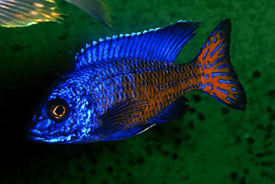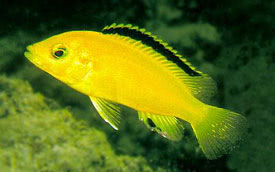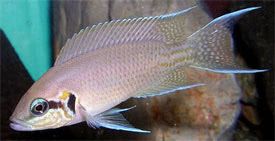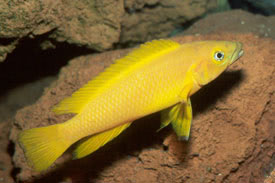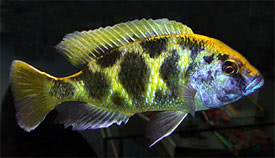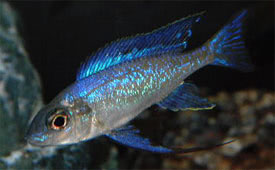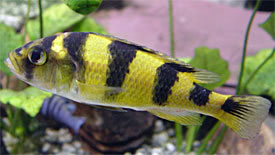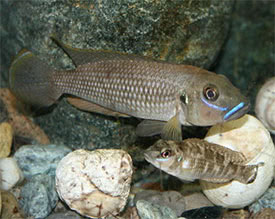
 Magyarul / Hungarian
Magyarul / Hungarian
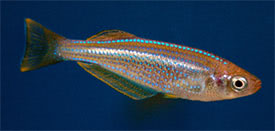

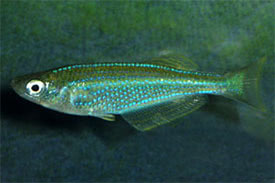
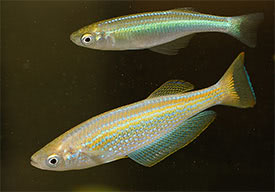
- Scientific name: Lamprichthys tanganicanus
- Synonyms: Haplochilus tanganicanus, Mohanga tanganicana, Lamprichthys curtianalis
- Common name: Tanganyika Killifish, Tanganyika Lampeye
- Group: Killifish
- Habitat: East-Africa; Endemic to Lake Tanganyika and the deltas of its major rivers.
- Size: male:15 cm, female: 12 cm
- Biotope: Inhabits rocky shore areas, but also found offshore.
- Social behavior: An active shoaling fish that should be kept in a small group. A dominant male will estabilish a large territory among rocks. Can be kept in a Tanganyika biotope tank.
- Diet: Omnivorous; They will eat small live and frozen foods, also good quality flake foods.
- Breeding: Hard
- Tank: Minimum 120 litres
- Population: 6 fish for 190 litres
- Decoration: Set up the aquarium with lot of rocks and stones that form caves and crevices, and also leave large open swimming areas.
- Temperature: 24-26 °C
- pH: 7.5-8.8
- Hardness: 10-25 NK°
- Lifespan: 4-6 years
Description: Lamprichthys tanganicanus, is endemic to the lake only. Tanganyika Killifish is an elongated fish with a slightly arched back. The back of the male is dark olive-yellow, while the flanks are lighter. The body is covered with bright blue spots. The fins are yellow with numerous bright yellow spots, and the caudal fin has also some blue spots. Females are less colorful, with silver-blue spots on their body. There is also a strain with red instead of yellow found in some locations in the lake. Males will do spectacular dominance fights: they will circle each other, noses to tails all the while shaking and displaying their finnage, but they will not nipping each other during these displays. Females will fight as well, but they are more vicious, so it is much better to keep at least four females with 2 males. Lamprichthys tanganicanus is differs from the tiny killies, as it is a non-annual fish, which doesn’t inhabit diminutive ponds and streams, instead it inhabits Lake Tanganyika, one of the world’s largest fresh water.
Adult males are significantly larger and more colourful than females. Before maturity, the sexes can be distinguished by the shape of their anal-fin: males have a long, parallelogram-shaped anal-fin, whereas the females have a shorter, triangular anal-fin. For breeding use a large tank with many rock structures. The spawning is a slow process, males perform a courtship dance before the female lays the fertilised eggs in rock crevices. These rocks should be removed from the tank as the parents will eat the eggs, and hatch them in a separated tank. The number of the eggs can reach 100, and about 2.5 mm in diameter. They will hatch after 11-14 days. Start feeding the fry with brine shrimp nauplii and powdered dry foods. The young are slow-growing.





